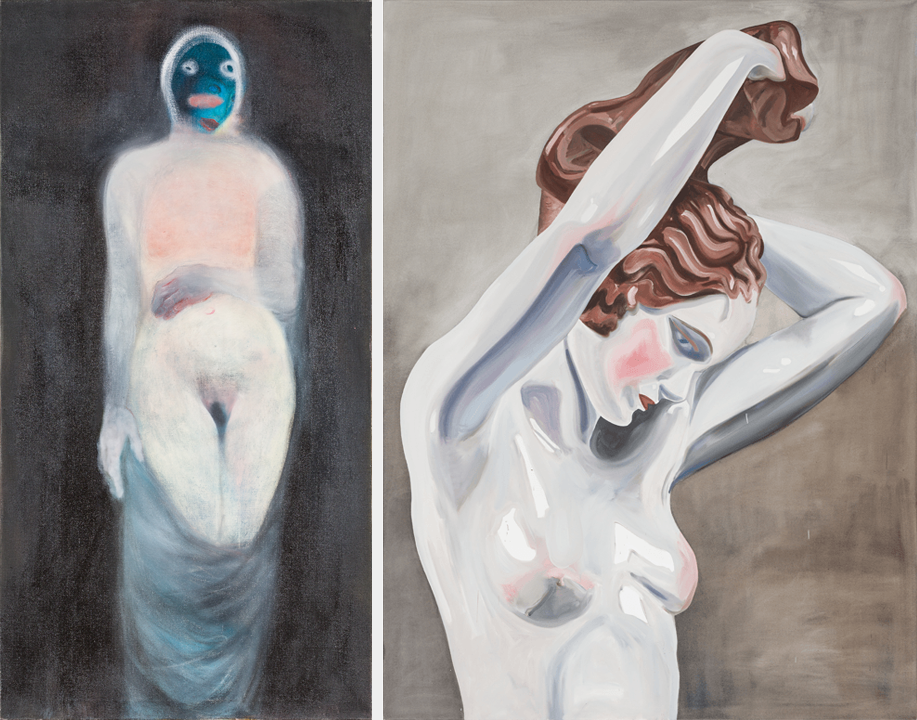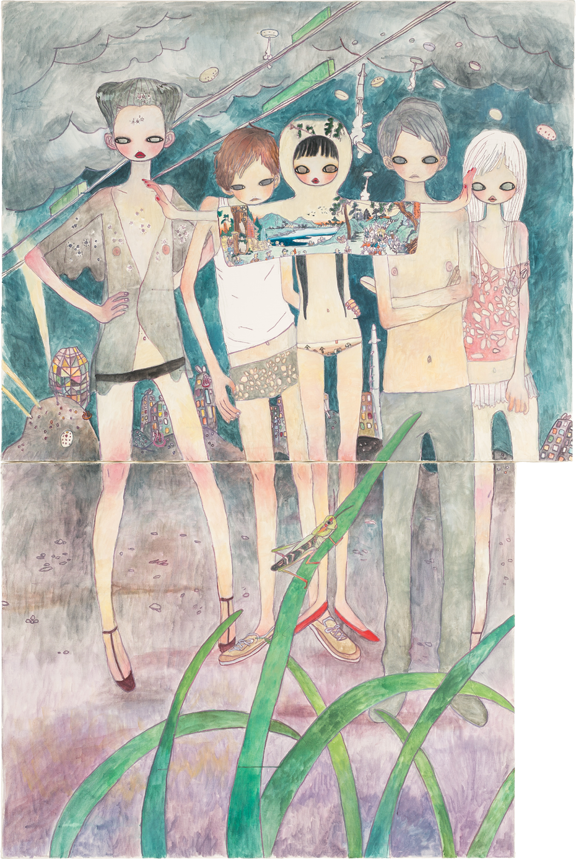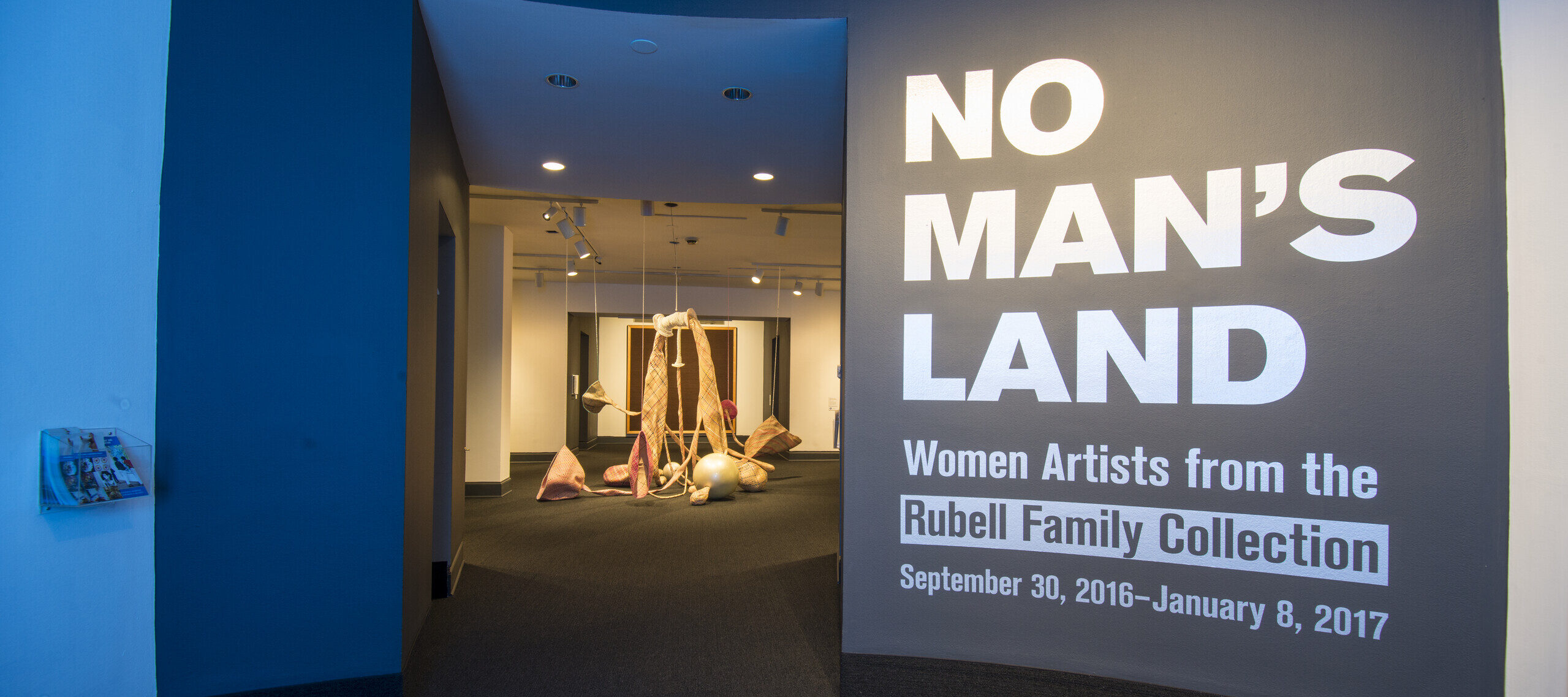Contemporary large-scale paintings and sculptural hybrids are on view in NO MAN’S LAND: Women Artists from the Rubell Family Collection. The exhibition imagines a visual conversation between 37 women artists from 15 countries exploring images of the female body and the physical process of making. Miriam Cahn, Amy Bessone, and Aya Takano depict ambiguous figures that provoke viewers’ curiosity.
What’s On View?

Miriam Cahn’s Versehrt, 1998
Miriam Cahn (b. 1949, Basel, Switzerland) creates intimate and haunting oil paintings. Before 1994, Cahn only painted monotone compositions. Michelangelo Antonioni’s 1964 film Il deserto rosso (Red Desert) inspired Cahn to add pops of intense color to her paintings.
Versehrt, which means injured or damaged, depicts a ghostly female figure against a stark background. The subject’s blue-hued face resembles a mask. Her translucent skin recalls a ghost, but her bodily features evoke human physicality. Nearly life-size, the subject appears to drift toward the viewer from a dark, ambiguous background. Cahn questions traditional depictions of women through her haunting figures.
Amy Bessone’s No. 329 (Edit), 2007
Working with oil on canvas, Amy Bessone (b. 1970, New York City) explores themes of femininity and the representation of women in art history. “Found objects are my muses,” says the artist. Bessone works from images of small porcelain figurines, which she enlarges to fill colossal canvases.
No. 329 (Edit) is a portrait of a nude porcelain figurine. The subject’s stiff posture and inhuman, gray, and glossy skin are emphasized at a larger scale. The scale of the figure also amplifies its seductive pose and critiques the sculpture’s original purpose as a tantalizing object of desire. No. 329 (Edit) questions the canonical female nude, consumerism, and the male gaze. Through painting a found object, Bessone regains control of the female nude.

Aya Takano’s On the Night of Departure, Black Hair Flows (2003)
Aya Takano (b. 1976, Saitama, Japan) studied under the popular Japanese artist Takashi Murakami, who founded the Superflat movement. The artist draws heavily from historic and contemporary Japanese culture, with references to manga (Japanese comics and cartoons), ukiyo-e (woodblock prints from the Edo period), and Shunga (erotic art).
Characteristic of Takano’s painting style, the androgynous figures in On the Night of Departure have circular faces, rail-thin bodies, and eyes without pupils. Spaceships floating in the background are evidence of Takano’s interest in science fiction. Takano says, “I think of the figures that I create as spiritual beings.”
Visit the museum and explore NO MAN’S LAND, on view through January 8, 2017.

